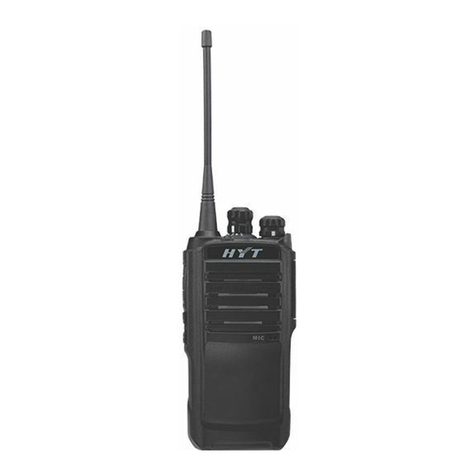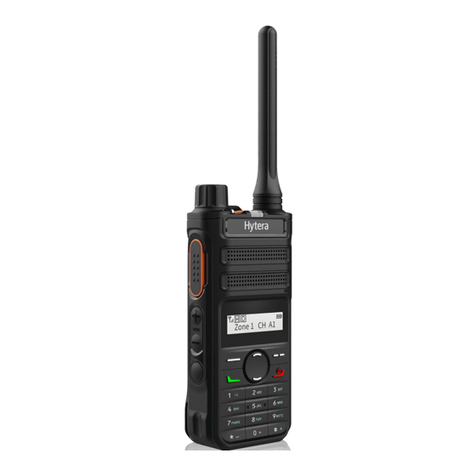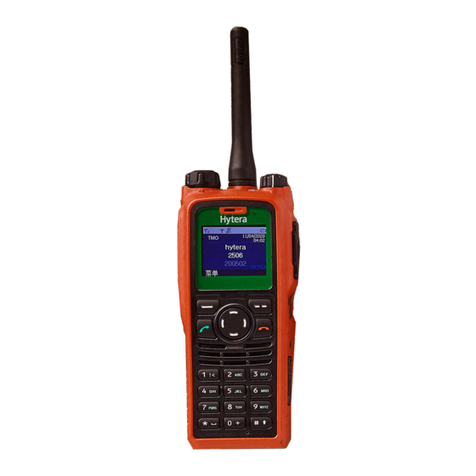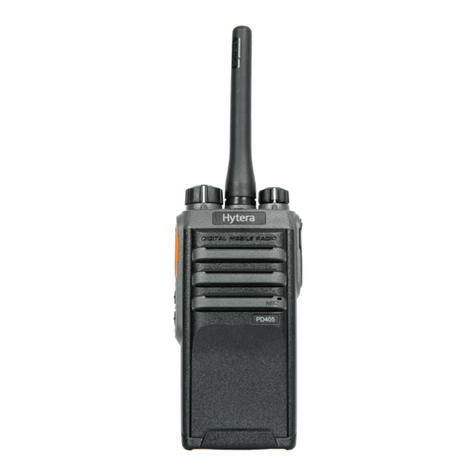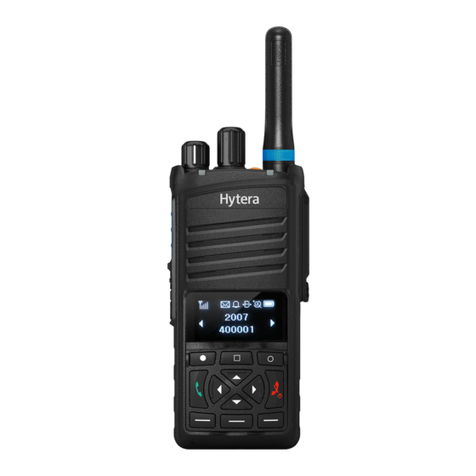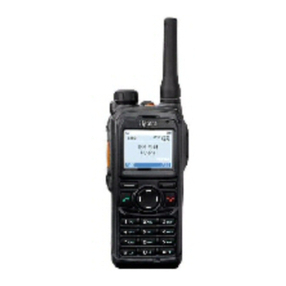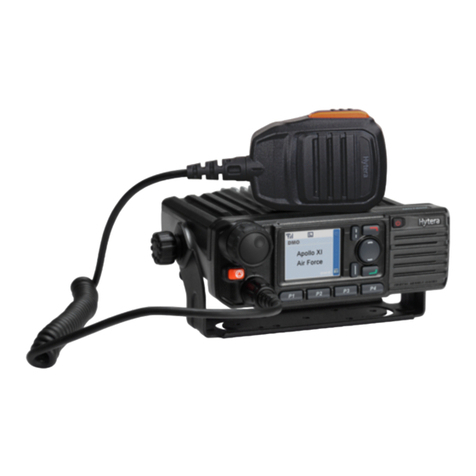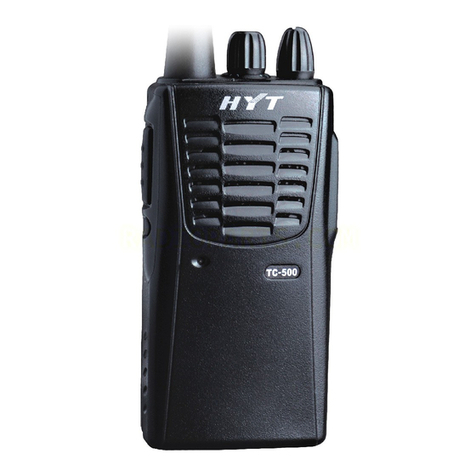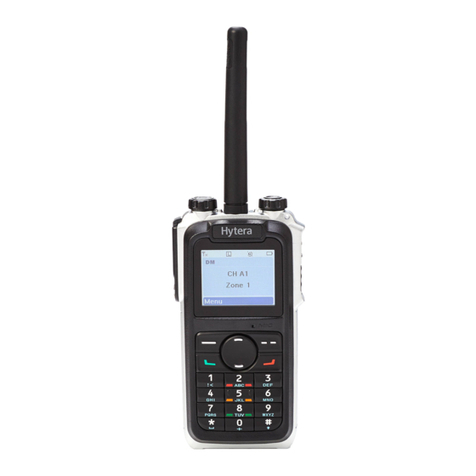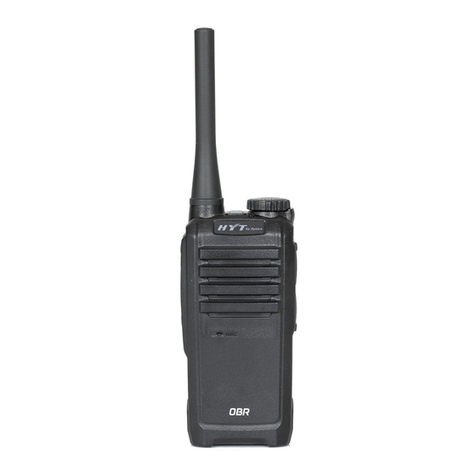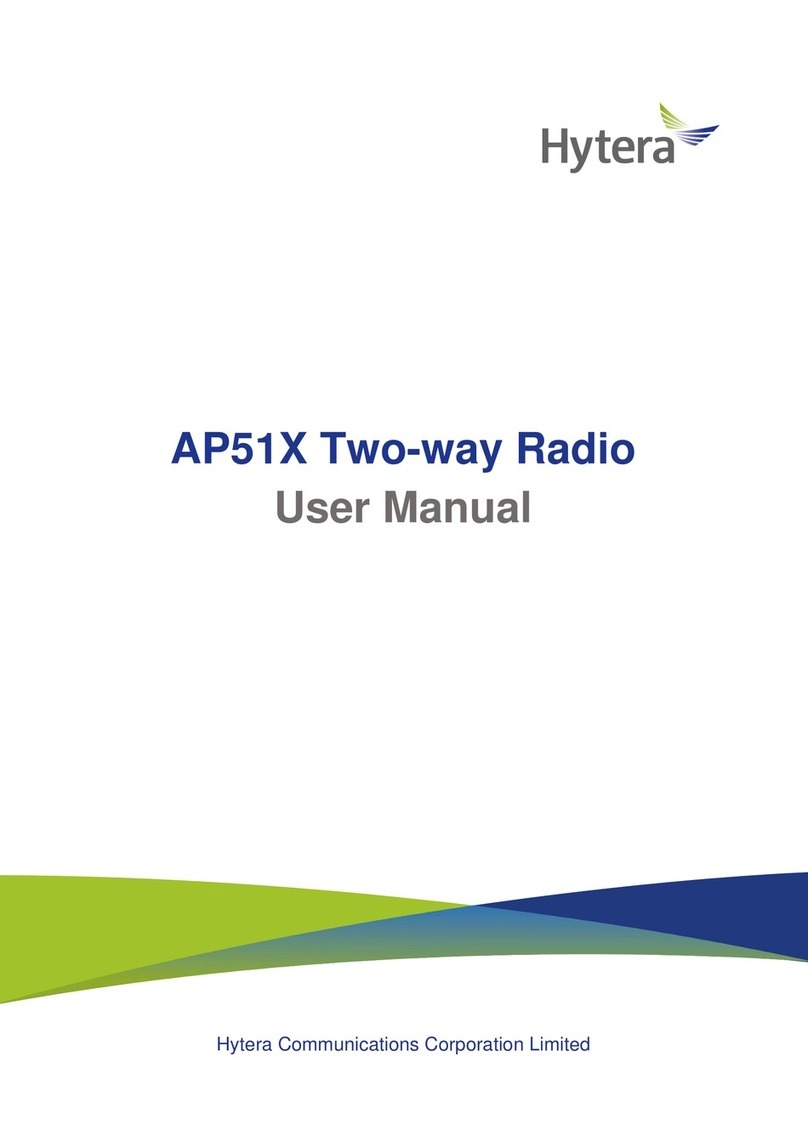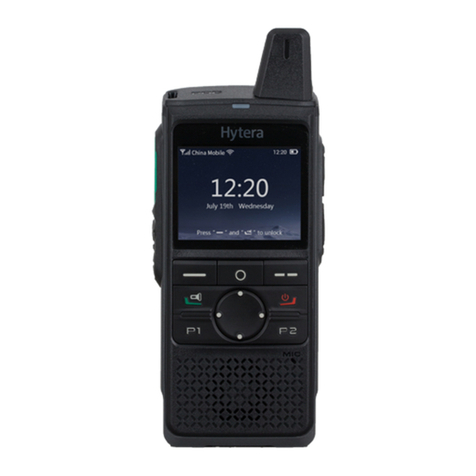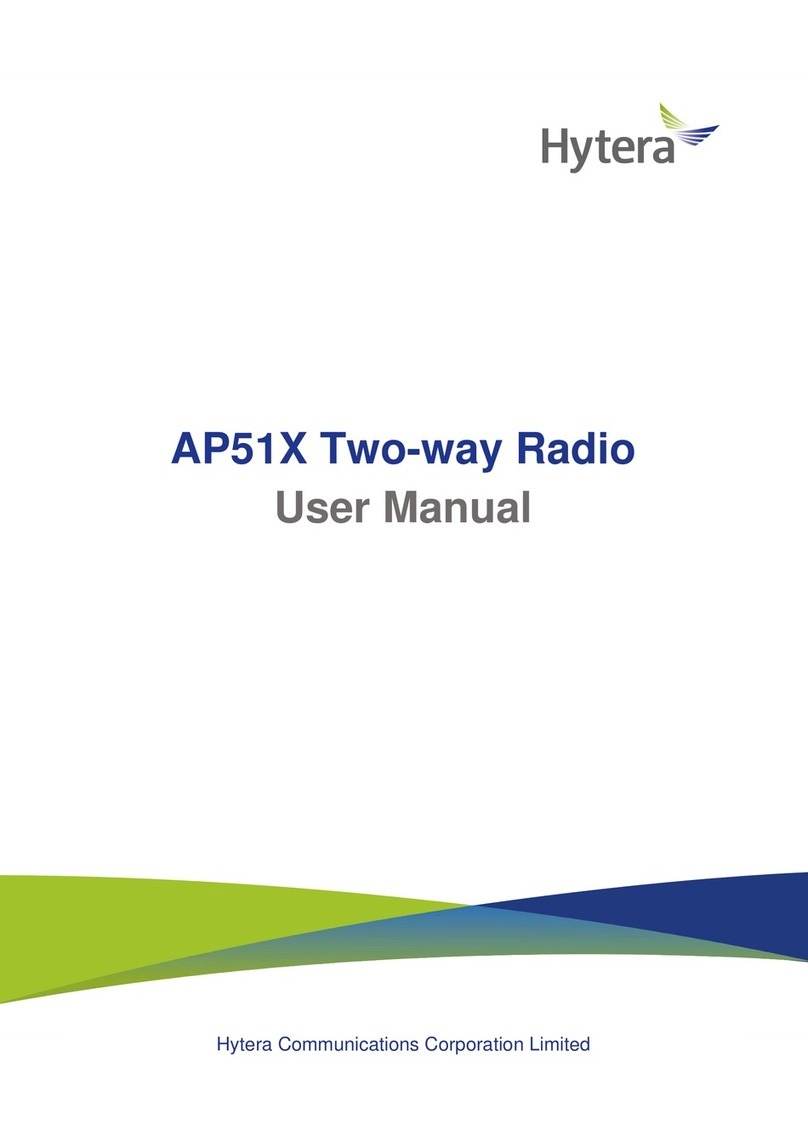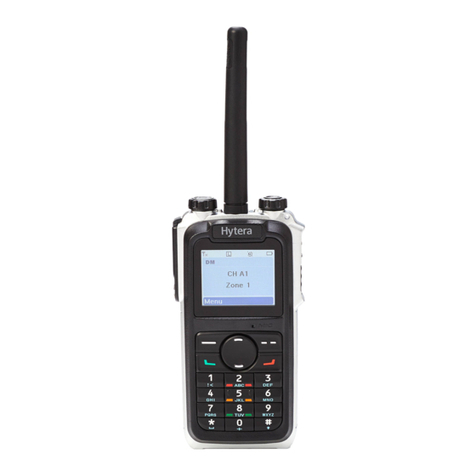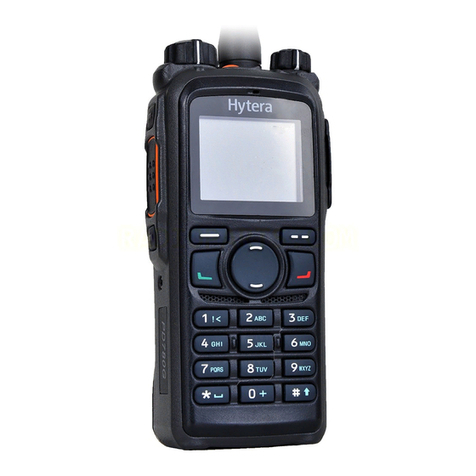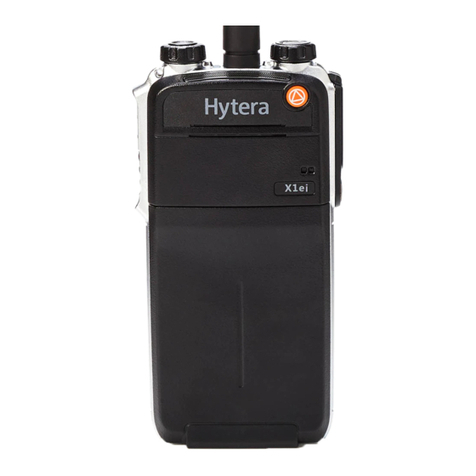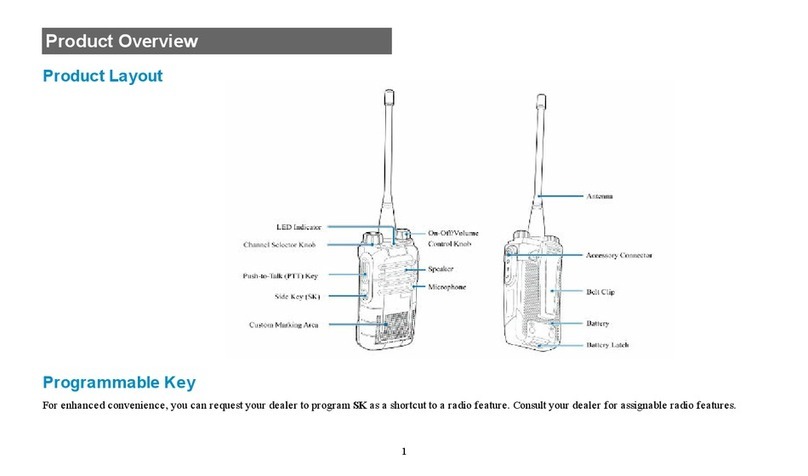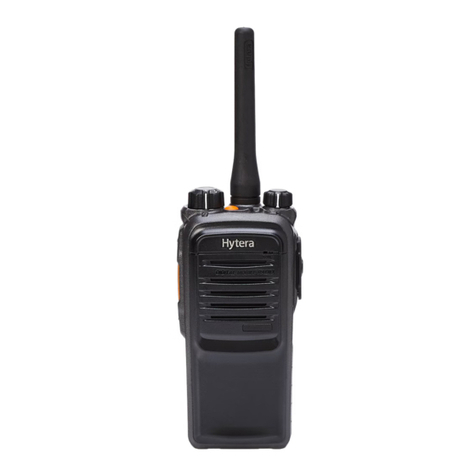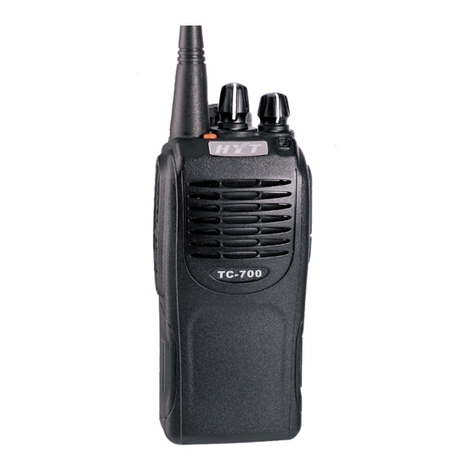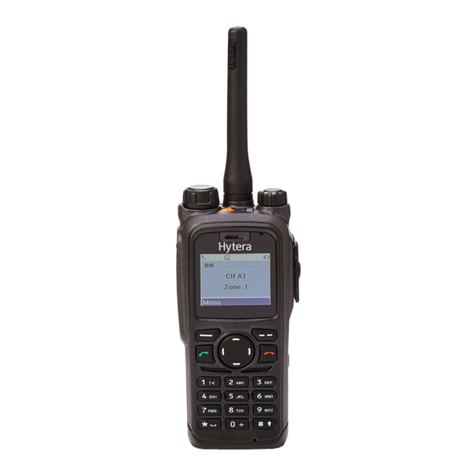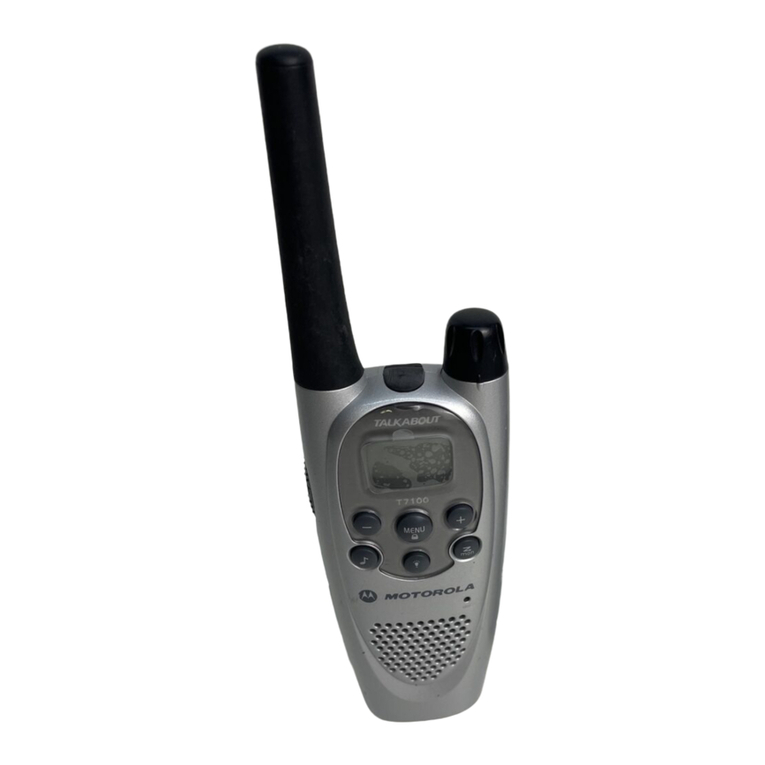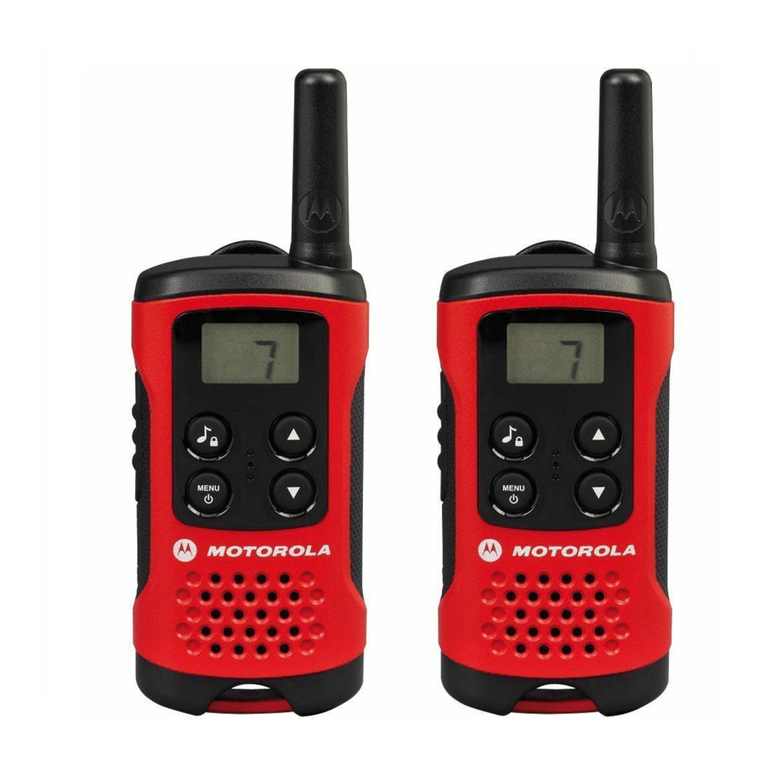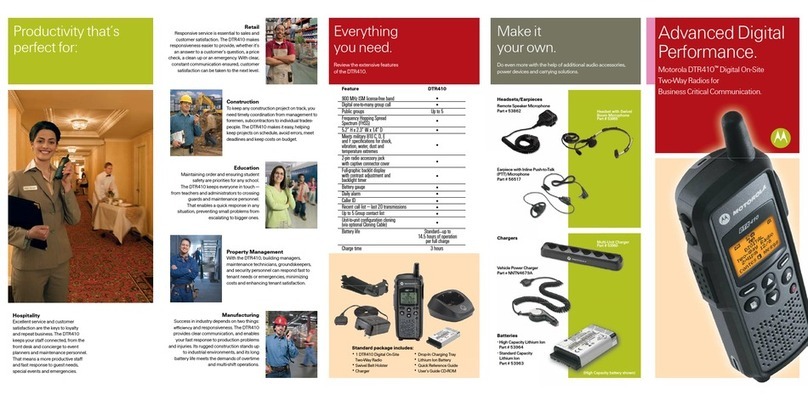
第
2
页
共
57
页
Revision History
Version Date Contents Revised
Parts No. 2006 September Initial release
General
Manual Scope
This manual is intended for use by experienced technicians familiar with similar types of
communication equipment. It contains all service information required for the equipment
and is current as of the publication date.
Precautions
Safety Standards
●DO NOT operate your radio when someone is either touching or standing within
2 or 3 feet of the antenna, to avoid the possibility of radio frequency burns or
related physical injury.
●DO NOT operate the radio near electrical blasting caps or in an explosive
atmosphere.
●Switch OFF the radio while refueling or parking at gas station.
●Turn off your radio in any place where posted notices instruct you to do so.
●DO NOT modify the radio for any reason.
●DO NOT expose the radio to direct sunlight over a long time, nor place it close to
heating source.
●DO NOT place the radio in excessively dusty, humid areas, nor on unstable
surfaces.
●Refer the service to qualified technicians only.
Operation Safety Guidelines
●For vehicles equipped with electronic anti-skid braking systems, electronic
ignition systems or electronic fuel injection systems, interferences may occur
during the radio transmission. If the foregoing electronic equipments are
installed on your vehicle, please contact your dealer for further assistance to
make sure that the radio transmission will not interfere with these equipments.
●For radio installation in vehicles fueled by LP gas with LP gas container within
interior of the vehicles, the following precautions are recommended for personal
safety.
